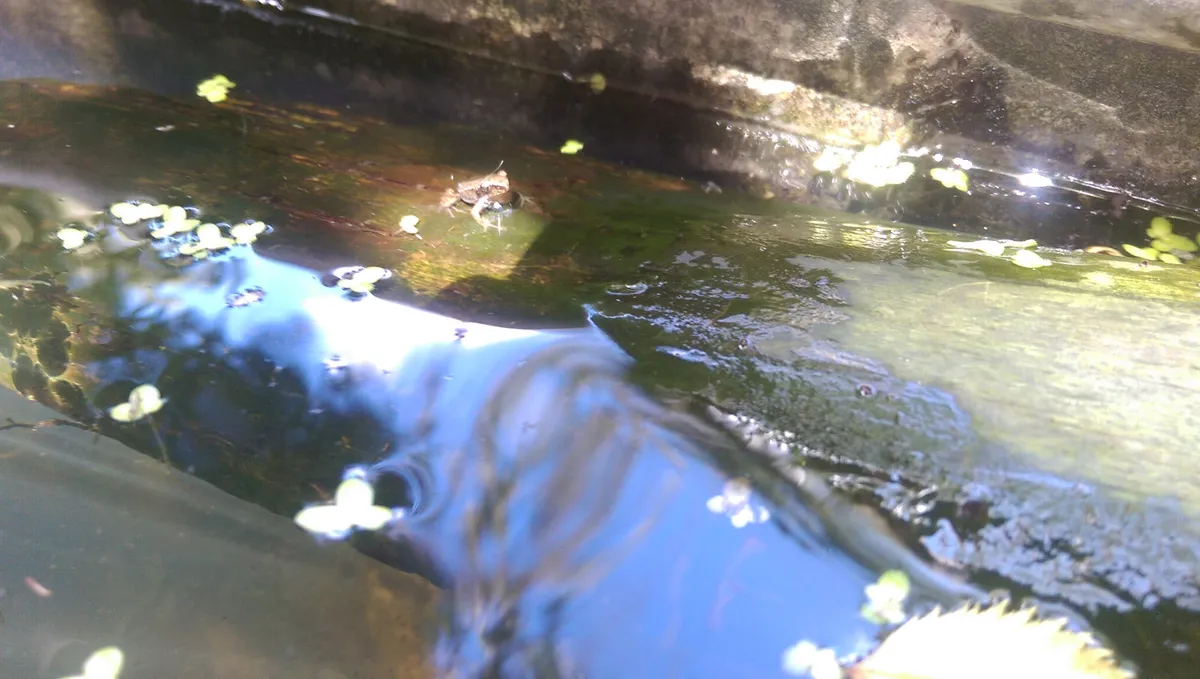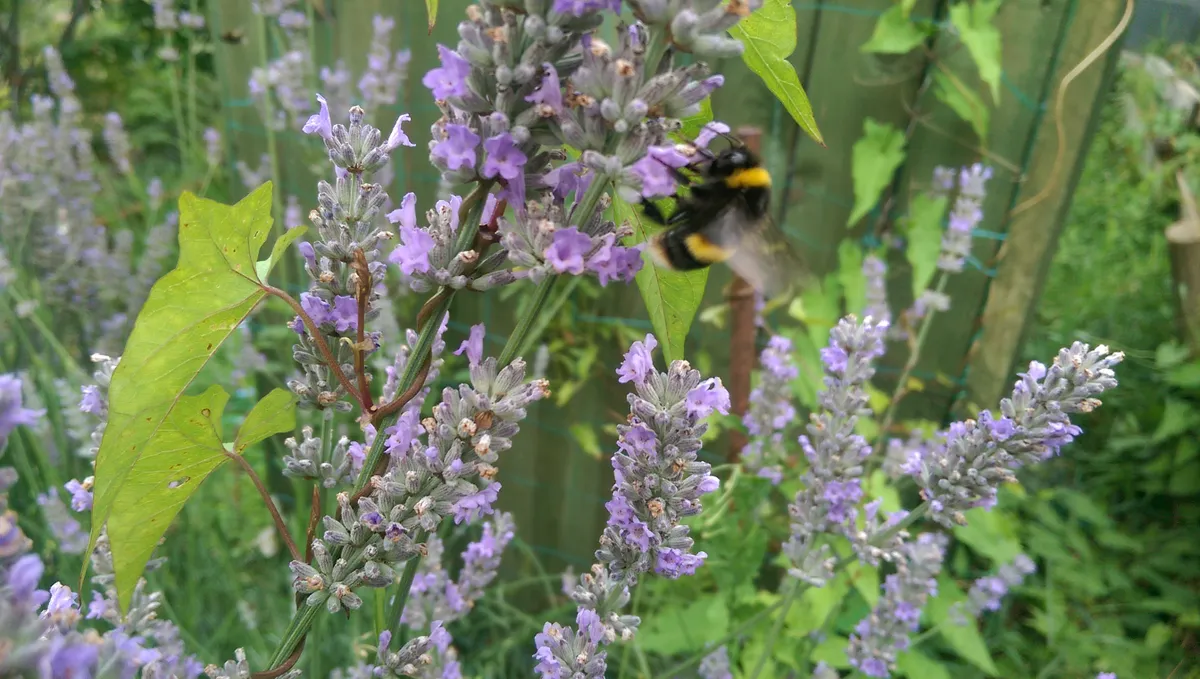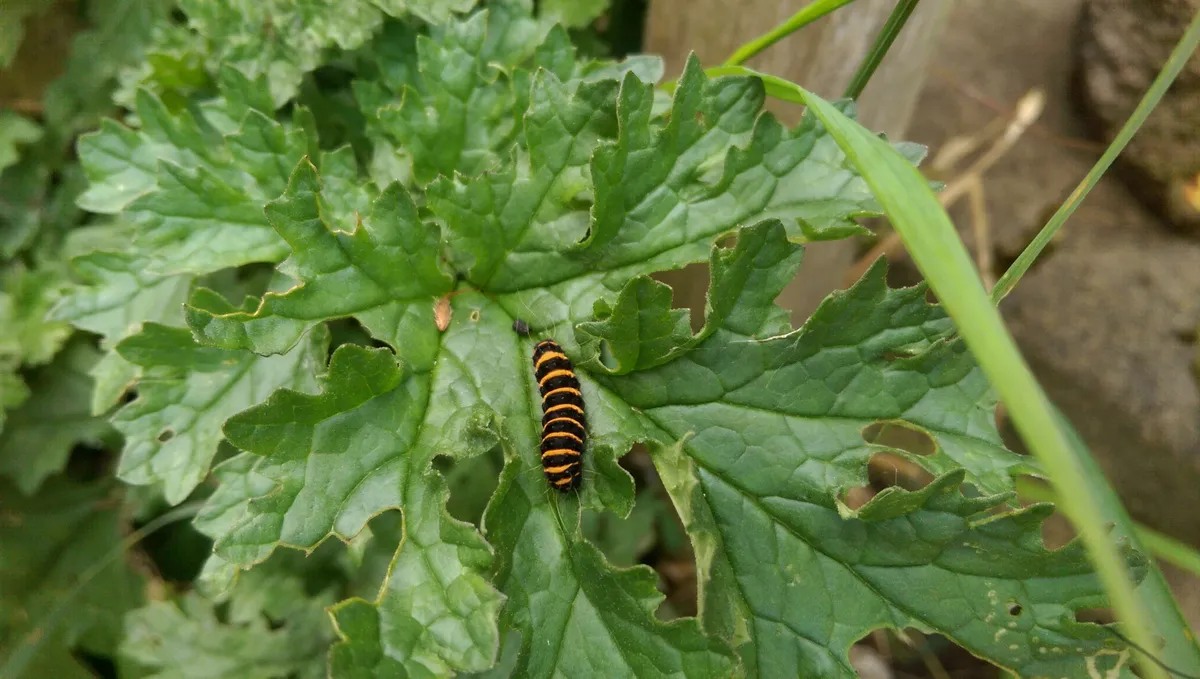Perrett’s Park in Bristol, where I have my allotment, has been cultivated for more than 100 years and so is full of mature fruit trees, and plenty of gap spaces where nettles, brambles, grasses and wildflowers flourish. There is also a dedicated wilderness area and many of the allotmenteers leave small areas periodically fallow. Because of this it’s a perfect site for wildlife, as I’ve been discovering since I took on my own allotment this summer.

Slow worms
I was delighted to discover two shed slow worm skins while doing my initial clearance of plot 6B. Slow worms - a legless lizard - shed their tails when under attack, but cats are a predator these protected creatures can’t defend themselves against, so I’ve been adding garlic granules to my beds as I clear them to keep the moggies off. Slow worms like to hide under something warm - a piece of corrugated iron or black plastic does the trick - so I’m hoping to see some in spring when I remove the landscaping fabric I’m using to clear some of the beds.
Hedgehogs
Despite their diminishing population nationwide, hedgehogs have been spotted very recently on the allotments (along with foxes and badgers) so I’m keeping my eyes peeled! I grew up in a small rural town where hedgehogs were a pretty common sight - we even rescued one from my school flower beds once - so it’s heartening to hear they’ve found an urban oasis here.
You can find out how to help hedgehogs with our expert guide.

Tadpoles and frogs
One of the water troughs near my plot has been home to tadpoles for the last month. I’ve even seen a baby frog resting on the plank of wood every trough on site has to help wee beasties crawl in and out. Tadpoles don’t often survive in these troughs, due to the chemicals in the mains water pumped into them. But because this particular trough doesn’t really get used the water isn’t being refilled and they seem to be surviving. It’s been fascinating watching them slowly transform. One day they go from little blobs to having eyes on the side of their heads, then the markings appear and the legs are suddenly there. Blink and you’ll miss it!
Find out more about frogs and frogspawn
Butterflies
There are so many butterflies here. It really does show that if you have bio-diverse plant life then the wildlife will come. So far I’ve spotted Red Admirals, Brimstones, Dingy Skippers (good name), Commas (also a good name), Graylings, Painted Ladies, and various Whites and Fritillaries. They’re hard to capture on camera but I’ll keep trying!

Bumble bees
My plot neighbour G has built himself a rather spectacular shed and greenhouse, both out of bits of pallet, with a pair of glass cupboard doors making up the front of his greenhouse. While having a chat a few days ago we both commented on the huge number of bees buzzing around the lavender he’s planted between his greenhouse and the path. It’s a huge bush, at least 6ft tall and no doubt is helping the pollination of his beans (growing very nicely) and mine (playing catch up after languishing in a pot for too long while I cleared the site).
There is currently discussion on site about putting in beehives, so we may have even more pollinators soon.

Cinnabar caterpillars
My very first day on the allotment I saw what looked at first like a bright red butterfly, which turned out on closer inspection to be a cinnabar moth. Cinnabar caterpillars are often spotted here on the ragwort that grows on the edges of many plots.
With their stripy yellow and black markings they are quite spectacular, and you can see why potential predators would be wary of them.
Although ragwort is poisonous to grazing animals, no one seems to mind its presence in the gap spaces here. If you are planning on pulling any up, Goverment advice is to wear waterproof gardening gloves and cover your forearms, to minimise the risk of the toxic ragwort alkaloids being absorbed through the skin.
Next time: There’s been a lot of growing going on and I celebrate my first harvest.

